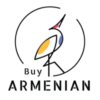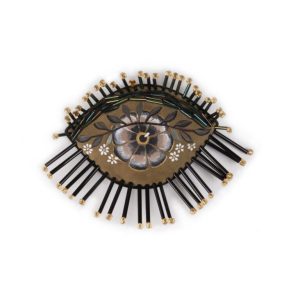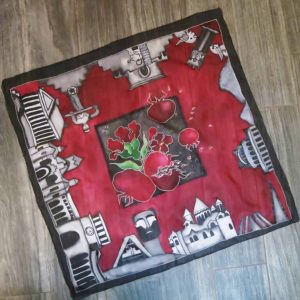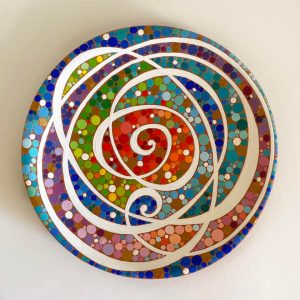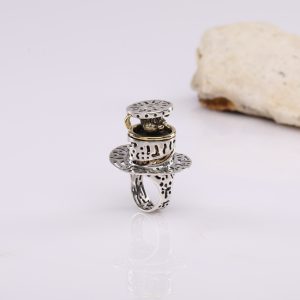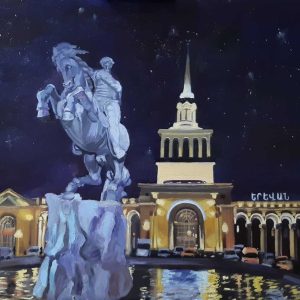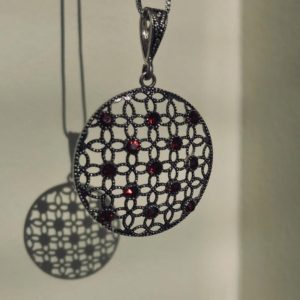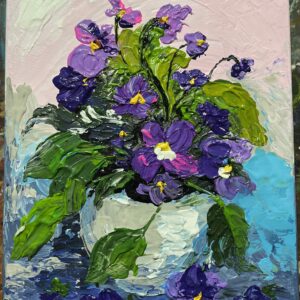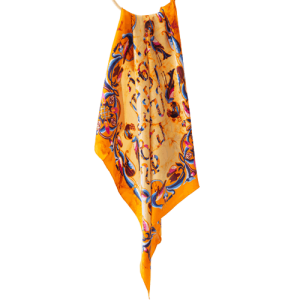-
“Eye” Leather Brooch
Adding a glamorous finishing touch to everyday ensembles is effortless with this brooch by Tashchyan handmade brand. Chic and sophisticated, this brooch is perfect for completing everyday outfits with an elegant flourish. This handmade accessory piece will highlight your individuality and make your looks special.
$30.00“Eye” Leather Brooch
$30.00 -
Crossbody Bag With Umbrellas
A beautiful bag with colorful umbrellas.
Size: 17cm * 21cmAdjustable strap, maximum length 120 cm.
If the product is on backorder, the processing time is 3-5 days.
$21.00Crossbody Bag With Umbrellas
$21.00 -
-
“Chameleon” Decorative Ceramic Plate
Decorative ceramic plate
Abstract decor features
Each plate is a unique artwork, hence it may slightly differ in colours and pattern.
This plate is intended for decorative use only. Do not use it for food serving.
SIZE : 3 sizes available.
15 cm in diameter,
20,5 cm in diameter,
25 cm in diameter.
Care : clean it with dry and soft cloth. Avoid contact with water.
Materials used : red clay, acrylic paints, varnish.
Processing time : 3-4 days.
$68.00 – $130.00 -
-
-
Sterling Silver Armenian Necklace
Sterling silver Handmade Armenian pendant with chain
$60.00 -
-
“Armenian Alphabet” Scarf
The Armenian alphabet was created in 405 AD.
One of the greatest marks of the Armenian identity is the Armenian language. The exact origins of the Armenian language, however, are a little bit obscure. Such is the case with many ancient languages. Serious scholarship starting from the 19th century has placed Armenian among the wider family of Indo-European languages, although it forms its own separate branch within that group. So the language does not have any close relatives today, even Indo-European ones, such as Spanish and Portuguese or Russian and Polish might be considered.Armenian is also unique in its writing system. The Armenians use their own alphabet which was, by tradition, created following the studies and meditations of a monk, Mesrop Mashtots, in the early 5th century AD. Christianity had already been accepted as the national religion for a hundred years in Armenia, but the Bible was not yet available in the native language. The tradition goes that the main motivation to come up with a separate Armenian alphabet was in order to translate the Bible in such a way that would be accessible and suitable for the language and the people.
Mesrop Mashtots – who has since been venerated as a saint, as the patron of teaching and learning for Armenians – accomplished the task in the year 405 AD, thus setting the stage for a rich trove of works of religion and history, science and philosophy, illuminated manuscripts, and published books in the millennium and a half that followed, continuing on today. A major road in the capital of Armenia, Yerevan, is named for Mashtots, and one end of it is the apt location for the Matenadaran, the national repository of manuscripts which also functions as a research institute and museum.
$110.00 -
